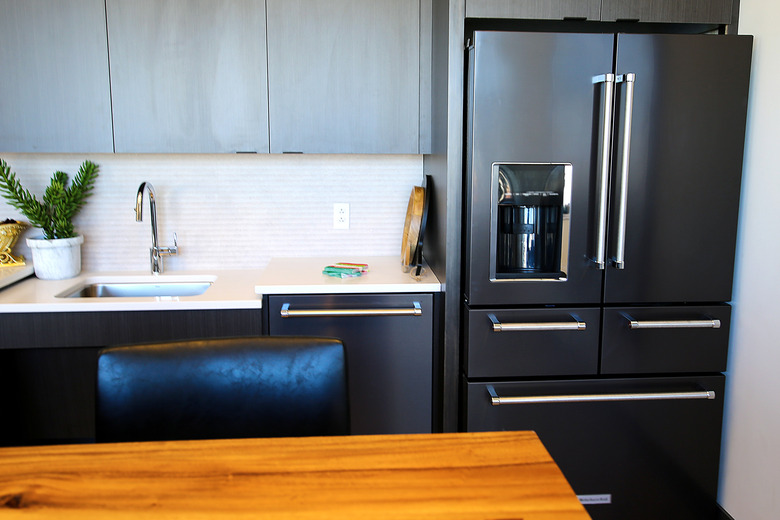Removing Hard Water Stains From A Quartz Countertop
Quartz is favored for its durable and attractive surface. The nonporous surface can stand up to liquid spills and stains from wine to oily sauces when properly maintained. While it is practically impervious to typical stains that occur in kitchens and bathrooms, it can become marred by hard water stains.
Hard water can leave scaly buildup on quartz. Water rings from glasses left unattended for too long on the countertop can leave behind unsightly marks. These seemingly serious stains are actually not that difficult to remove with the right methods, cleaners and tools.
Tip
Cleaning water from a quartz surface immediately will keep limescale at bay.
Issues with Hard Water
Issues with Hard Water
The buildup of limescale occurs when water is left to evaporate on the surface of the quartz countertop. This limescale is stubborn and can spread undetected until it becomes an eyesore. Some soaps and detergents make the limescale even more difficult to ultimately remove. These cleaning agents bond with the hard water and make the limescale sticky and crusty.
Hard water buildup tends to show around the base of faucets and the rim of drains. Left unattended, these limescale deposits can become thick and more difficult to remove. Luckily, this is a superficial stain and doesn't penetrate the gleaming quartz countertop beneath.
Prepping the Quartz Countertop
Prepping the Quartz Countertop
Remove any small appliances or items from the countertop. You need some room to work and chip away at the limescale without impediment. Scrape off as much of the hard water buildup that you can with a hard-plastic spatula.
A stone-safe soft scrubbing pad can also take down the first layer of tough limescale. Nylon brushes can whisk away unwanted hard water deposits without scratching stainless steel or other fixtures. For more difficult deposits, push a single-edge razor blade under the crusty layer and lift it safely from the surface. Steel wool can be used to take down thick layers of limescale. While it won't damage the quartz, it can scratch up surrounding metal, plastic or caulking.
Methods to Remove Mineral Deposits
Methods to Remove Mineral Deposits
Once you've taken down as much of the hard water deposits as possible, there are a few ways to take down that last layer. Liberally sprinkle baking soda over the limescale and pour warm water over it. Cover it with plastic wrap and allow it to sit for two hours or overnight to pull the stain from the surface of the quartz countertop.
Commercial quartz countertop cleaner and polish work well to restore the quartz surface's gleam. Rub the quartz countertop cleaner over the stain or entire surface and allow it to sit for 20 minutes to an hour. Rinse the cleaner off the countertop and buff dry.
Removing Rings on Quartz Countertops
Removing Rings on Quartz Countertops
Rings on quartz countertops can ruin the aesthetic of the natural stone surface. To remove water marks on quartz, make a paste of one-part each of water and baking soda. Rub that into the limescale stain with small circular motions and a soft sponge.
Bob Vila suggests using glass cleaner on fairly fresh rings on a quartz countertop. Quickly remove water rings, wine stains or other liquid spills with a dry cloth to keep the surface pristine.
